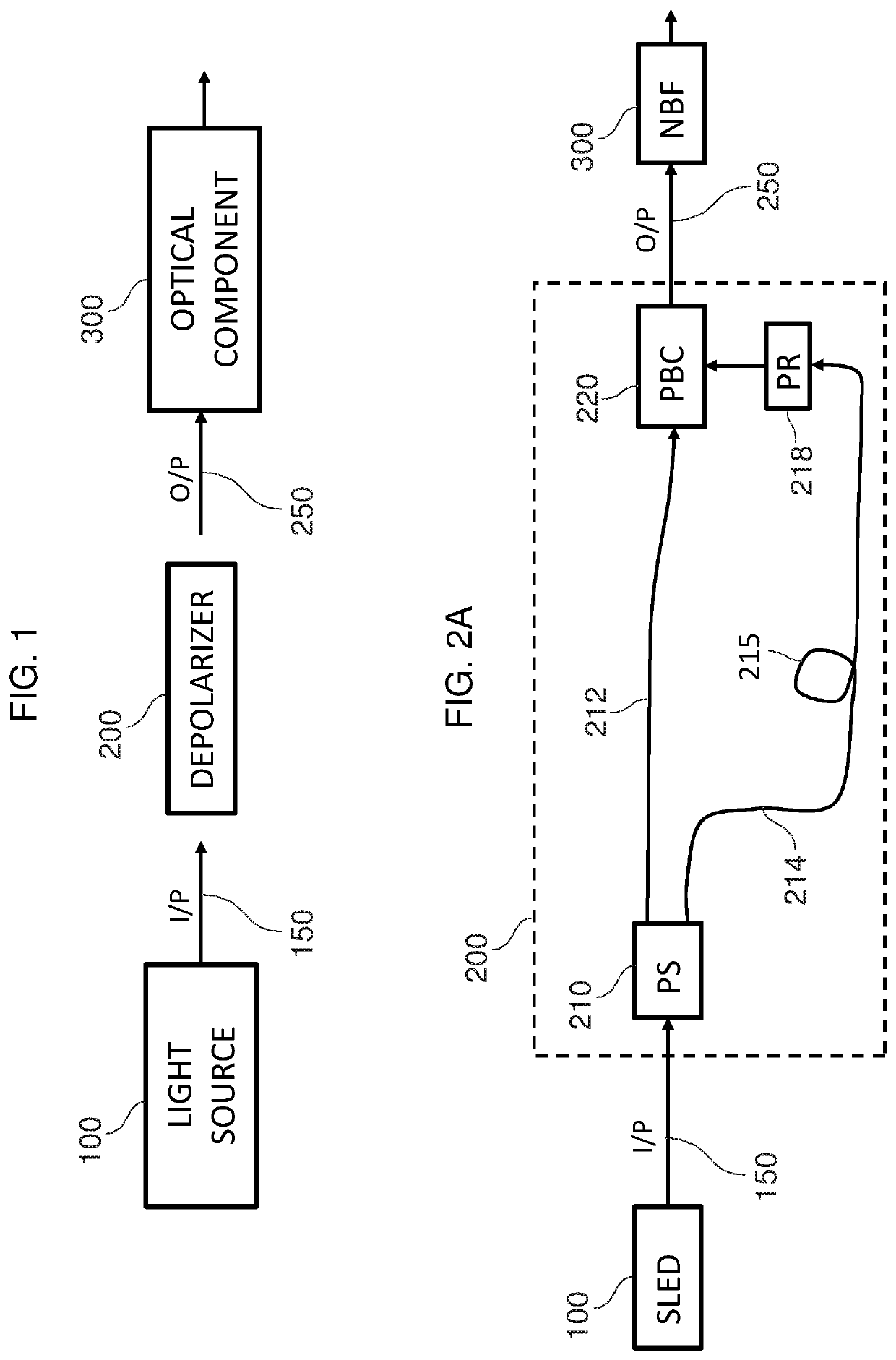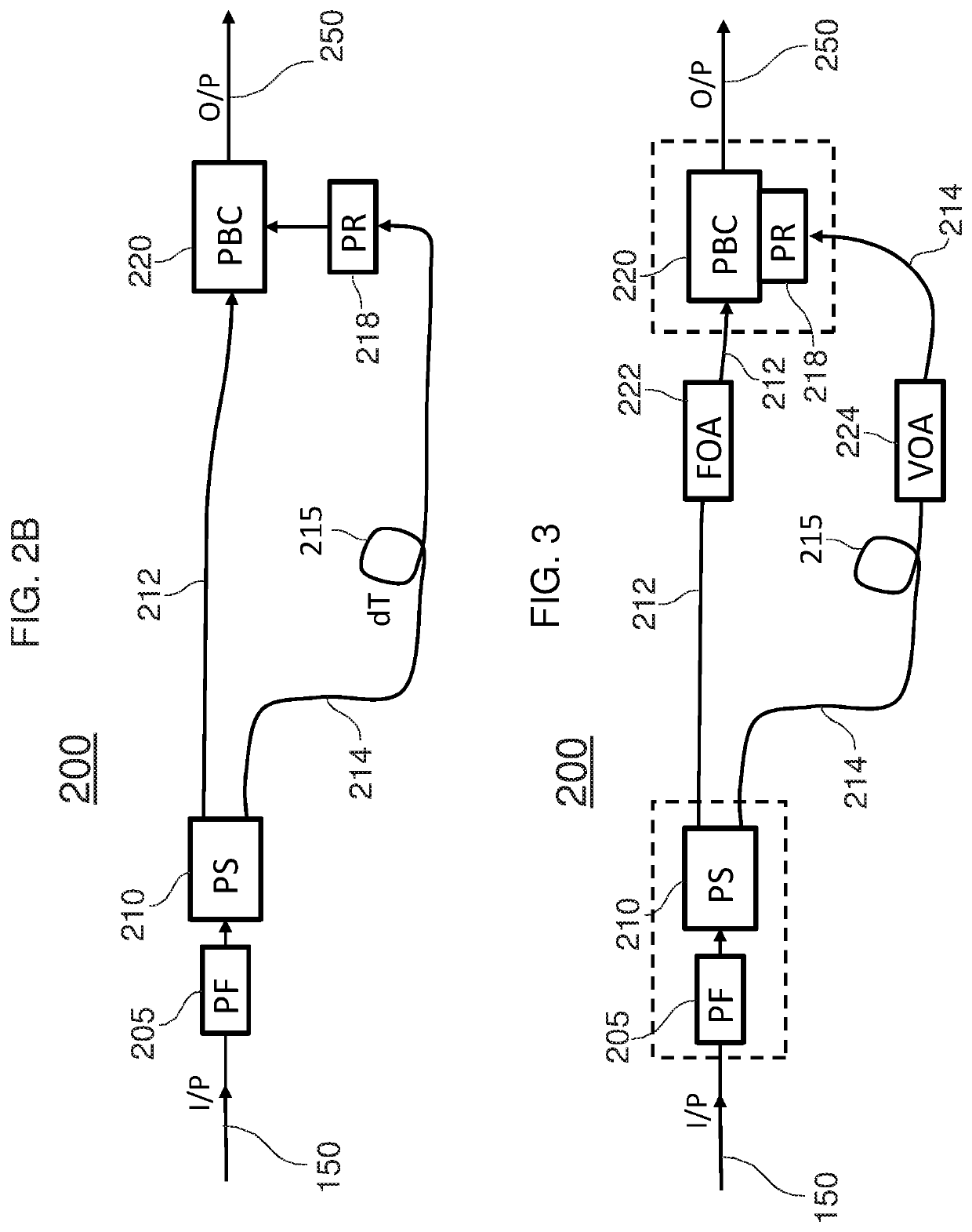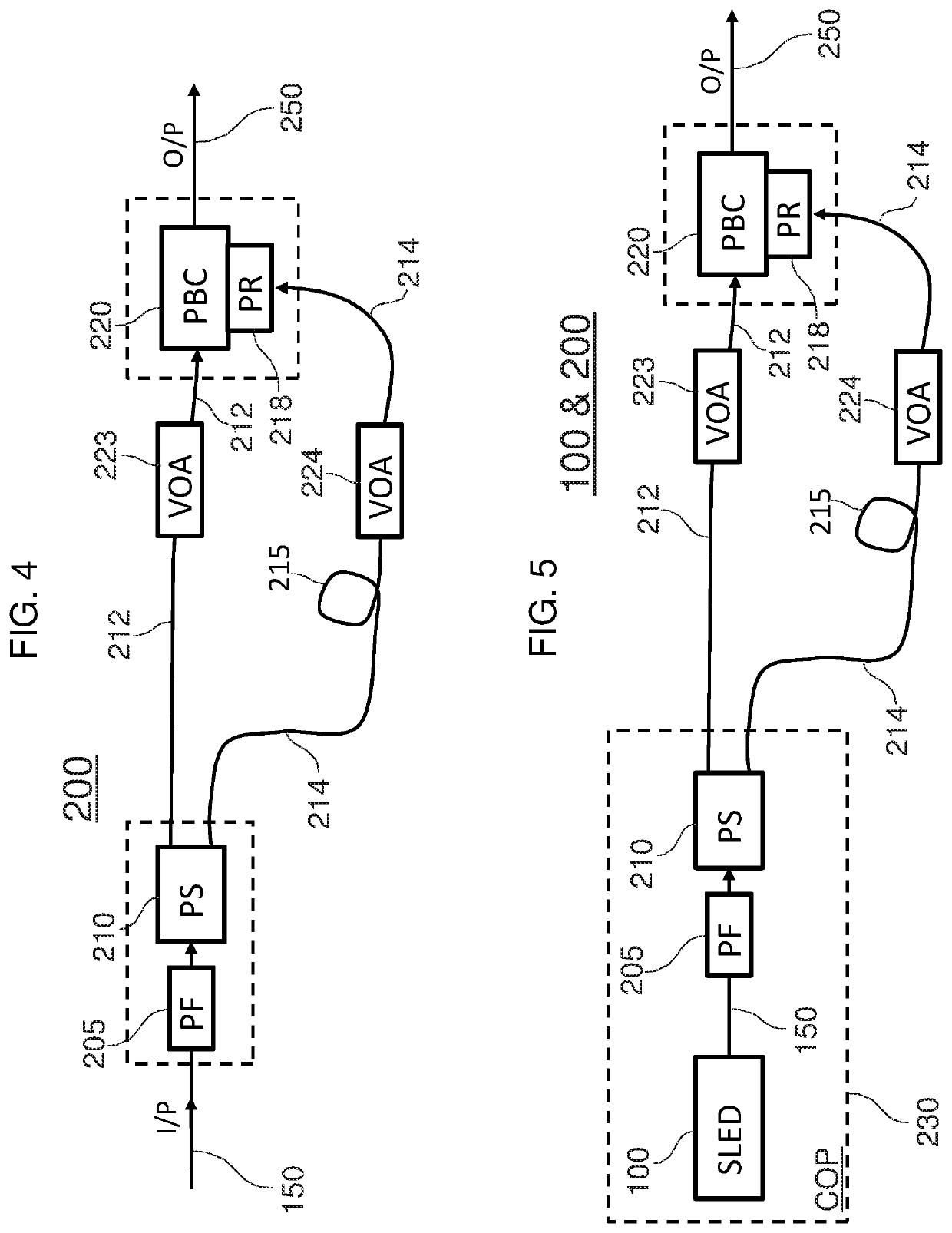Depolarizers
a depolarizer and polarizer technology, applied in the field of depolarizers, to achieve the effect of avoiding polarization mixing and cross-coupling
- Summary
- Abstract
- Description
- Claims
- Application Information
AI Technical Summary
Benefits of technology
Problems solved by technology
Method used
Image
Examples
Embodiment Construction
lass="d_n">[0079]Before describing various embodiments, we first describe the meaning of some terms used in this document.
[0080]Optical component: The term optical component is used generically to include all components relevant for the optical design and performance of a device or system, including for example optoelectronic components (e.g. a photodiode or a variable optical attenuator) and optomechanical components (e.g. coupler positioners) and not just purely optical components (e.g. a micro-optic lens or a section of optical fiber). An optical component may include a single optical element or a plurality of optical elements.
[0081]Common optical package (COP): COP is a term used to describe physical packaging available to house one or more optical components as well as optionally also electronic components. A COP is characterized by a housing containing the components to be packaged and externally connectable electrical pins and / or optical outputs, such as for connecting optica...
PUM
| Property | Measurement | Unit |
|---|---|---|
| wavelength range | aaaaa | aaaaa |
| insertion loss | aaaaa | aaaaa |
| coherence length | aaaaa | aaaaa |
Abstract
Description
Claims
Application Information
 Login to View More
Login to View More - R&D
- Intellectual Property
- Life Sciences
- Materials
- Tech Scout
- Unparalleled Data Quality
- Higher Quality Content
- 60% Fewer Hallucinations
Browse by: Latest US Patents, China's latest patents, Technical Efficacy Thesaurus, Application Domain, Technology Topic, Popular Technical Reports.
© 2025 PatSnap. All rights reserved.Legal|Privacy policy|Modern Slavery Act Transparency Statement|Sitemap|About US| Contact US: help@patsnap.com



